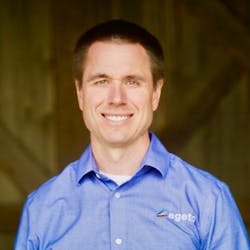Thinking Big, Building Small: Macro Goals, Big Hearts and the Microgrid Future
Proclivity doesn’t always result in productivity. Being passionate about a line of work is desirable in an employee, but it doesn’t mean they understand it enough to grasp it.
The microgrid industry is attracting thousands of new devotees every year who are intrigued by its crossroad of sustainability and reliability. A new generation sees a sort of rebellion in decentralization, as well as a personal connection in bringing the source closer to the customer.
Microgrids can be small, but they are not cheap nor uncomplicated. The challenges, experts say, include maintaining a trained, adaptable workforce — and savvy leadership to head those teams adequately — as the distributed energy revolution rolls forward into a much bigger piece of the future electricity equation.
Sometimes those needing more education on microgrids are actually those who are already in charge of electric delivery but with a more macro view.
“Many utilities and authorities having jurisdiction need to be educated by the project developer on what is allowed and what the rules mean,” Mike Murray, co-founder and chief operating officer at microgrid control technology company Ageto Energy, told Microgrid Knowledge. “Also, another complication is that utilities are rolling out rules and regulations, but the programs aren’t set up yet for projects to comply with.”
The states, territories and districts of the US of A are varied, to put it mildly, in their progress in making microgrids more accessible across the country. A recent Think Microgrid State Scorecard ranked only a handful of states as high as a B grade on their microgrid policies. The majority of states were scoring average at best.
“The process is still long, with interconnection queues sometimes taking four years to navigate from application to commissioning. The process is too long because policy hasn’t caught up in some places,” New Sun Road CEO Adrienne Pierce said.
“Design depends on function as well as policy, such as near-term and projected future demand charges,” Pierce pointed out. “Financing depends on design as well as policy, and project developers seek to stack value such as tax credits and rebates to bring costs down.”
“Design impacts permitting and interconnection, which can lead to delays due to complexity or new applications. And all of this varies from state to state and country to country,” she added. “So while there are more projects and opportunities, deployment is slow.”
The progress is slow, but the amount of available funding is rising at a breakneck pace. The federal Inflation Reduction Act allocates billions for distributed energy resources and microgrids, while California and Texas alone are adding deep, 10-digit financial support for the decentralization of power as an option for grid resiliency.
The microgrid sector could approach $20 billion in market activity in 2024, according to various reports. This is not just government support but financing from private equity, traditional investors and utilities, among others.
It will also bring in thousands, perhaps tens of thousands, of new job seekers excited about working in a field still in its relative infancy. But with youth comes inexperience and challenges in the learning curve.
“Ageto has been working with bringing in team members new to the industry and training them for the microgrid field,” Murray said. “The market is growing so quickly with so much opportunity.”
Happy New Year Ahead: Looking Forward to Microgrid 2024
April 22-24 at Baltimore's Waterfront : Historic Setting, Mission-Critical Topics
Join us to Experience the Revolution in Energy
And having a passion for the work pays off in accelerating a willingness to learn. For a company like New Sun Road, which is focused on bringing microgrids to remote, usually underserved communities around the world, the newest generation of employees is highly motivated to make a dent in the energy inequality sadly prevalent in modern times.
“With a strong desire to help build our clean energy infrastructure, our employees also want more equitable, reliable and accessible power for everyone,” Pierce said.
“We know we need to provide support and training and we highlight two things: First, our mission to provide cleaner, more reliable power for everyone,” she added. “Second, that we need all talents, skills, expertise and capabilities. You can be a chemical engineer by training, like myself, or have a Ph.D. in image engineering with an aptitude in coding, like one of our software interns.”
The common denominator is thinking big and building small
“What I am seeing is many smaller companies and solar installers are pursuing microgrids. Project developers no longer need to work with larger companies to install a microgrid,” Ageto Energy’s Murray noted. “I also see more and more developers installing microgrids are beginning to feel comfortable purchasing piece parts for a microgrid and installing them on site.”
The sky is not the limit for this small, but exponentially broad universe known as microgrids. Proven a viable answer for combating climate change while also answering the call for energy resiliency demand by mission-critical and industrial customers, the microgrid story in 2024 is likely to be much like 2023, only bigger –in a good way.
Meeting people where they live
“With the reduction in cost and the expansion of capability, we are seeing minigrids serving segments to help with wildfire mitigation, small nonprofits seeking increased resilience and renewables … [as well as] libraries, health clinics, multiunit resident buildings and beyond,” New Sun Road’s Pierce said.
About the Author
Rod Walton, Microgrid Knowledge Head of Content
Managing Editor
For Microgrid Knowledge editorial inquiries, please contact Managing Editor Rod Walton at [email protected].
I’ve spent the last 15 years covering the energy industry as a newspaper and trade journalist. I was an energy writer and business editor at the Tulsa World before moving to business-to-business media at PennWell Publishing, which later became Clarion Events, where I covered the electric power industry. I joined Endeavor Business Media in November 2021 to help launch EnergyTech, one of the company’s newest media brands. I joined Microgrid Knowledge in July 2023.
I earned my Bachelors degree in journalism from the University of Oklahoma. My career stops include the Moore American, Bartlesville Examiner-Enterprise, Wagoner Tribune and Tulsa World, all in Oklahoma . I have been married to Laura for the past 33-plus years and we have four children and one adorable granddaughter. We want the energy transition to make their lives better in the future.
Microgrid Knowledge and EnergyTech are focused on the mission critical and large-scale energy users and their sustainability and resiliency goals. These include the commercial and industrial sectors, as well as the military, universities, data centers and microgrids. The C&I sectors together account for close to 30 percent of greenhouse gas emissions in the U.S.
Many large-scale energy users such as Fortune 500 companies, and mission-critical users such as military bases, universities, healthcare facilities, public safety and data centers, shifting their energy priorities to reach net-zero carbon goals within the coming decades. These include plans for renewable energy power purchase agreements, but also on-site resiliency projects such as microgrids, combined heat and power, rooftop solar, energy storage, digitalization and building efficiency upgrades.



